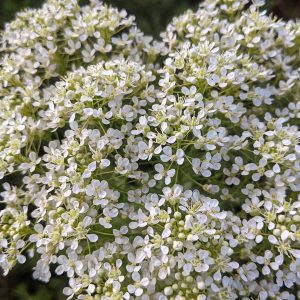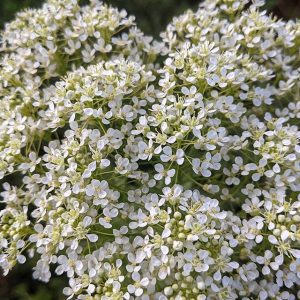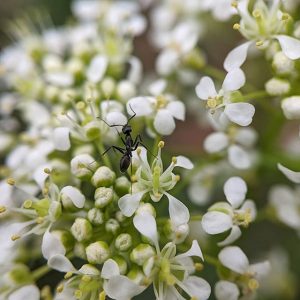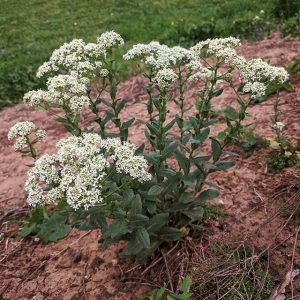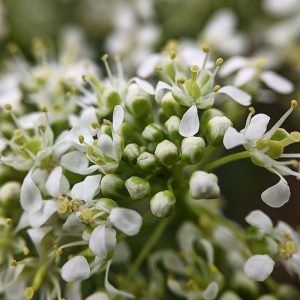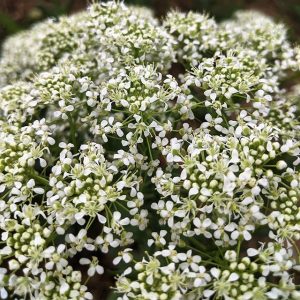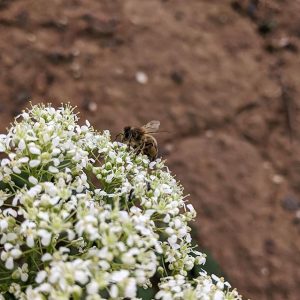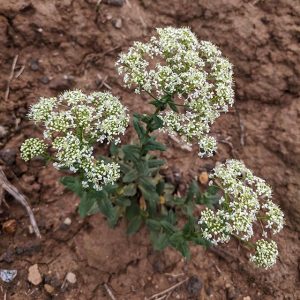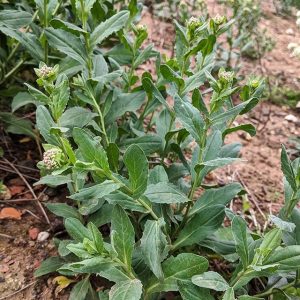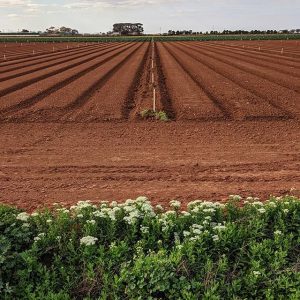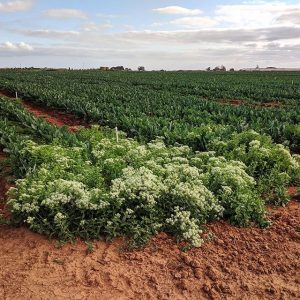Hoary Cress (Lepidium draba), a Eurasian mustard globalised in the 1800s in contaminated seed and ship ballast.
The first Australian infestation reportedly occurred at the Mona Vale estate in the Tasmanian Midlands in the 1860s, for which it became known as the ‘Mona Vale white weed’. In May 1883 it was collected in Victoria from grain fields above Bacchus Marsh, and also reported by a Werribee farmer. The plant spread quickly in the 1880s and 1890s, often as a contaminant in Alfalfa seed, then a major fodder crop. It was collected in NSW in 1898, and in Queensland in the 1920s.
Like many weed infestations that spasmed across Australian landscapes devastated by grazing and ill-considered cultivation, ‘the white weed’ was a source of apocalyptical pronouncements.
A 1904 writer in the Numurkah Leader reported Hoary Cress to be on equal ground with that year’s looming plague of locusts. ‘If it is not eradicated it will be as great a curse in this district as the California thistle is in Bungaree and the more it is cultivated the better it will grow. Any little bit of root will propagate.’ Another writer, complaining in 1915 about the Werribee Shire Council’s failure to act on the spread of the weed, called it ‘without a doubt, the worst weed that has ever been introduced into VIctoria,’ ‘one that is taking possession of nearly all the best land in the shire.’
Columnists demanded that the infection be cleansed by the farmer’s labour, described in terms of violence. As a writer in the Australasian prescribed, ‘You should use every means to extirpate it. By constant hoeing, and not allowing it to grow, you can bleed it to death.’ A 1910 reader of the Hobart Critic counselled in a letter, ‘Every time [the white weed] puts its head above the ground it should be lopped off quick and lively.’
Within Melbourne today, Hoary Cress is found across the metropolitan north and west. Spread to new sites by root fragment, it shows up frequently on infrastructural edges (roadsides, irrigation ditches, shared path edges) adjacent to cultivation and parkland.
View Original Post on Instagram
Search for information about Lepidium draba in the Flora of Victoria
View information and occurrences of Lepidium draba on the Atlas of Living Australia

